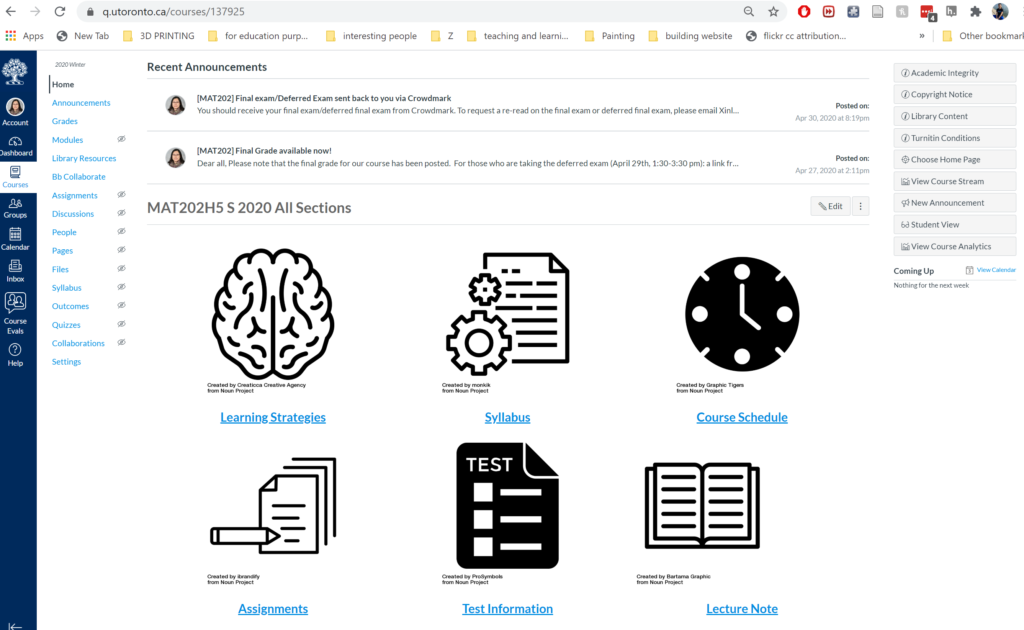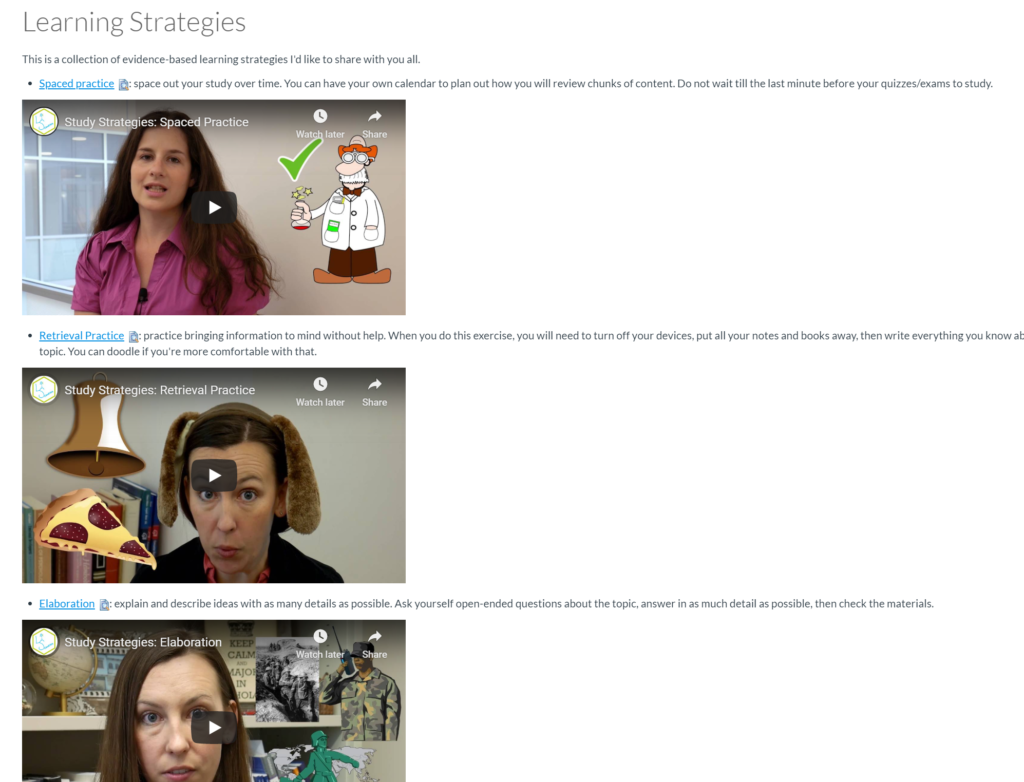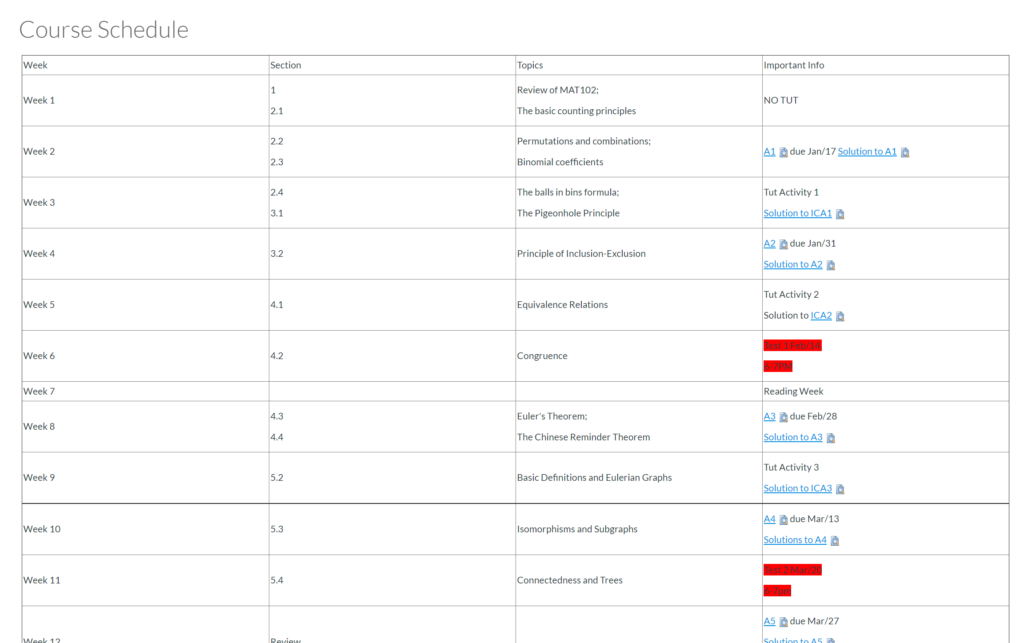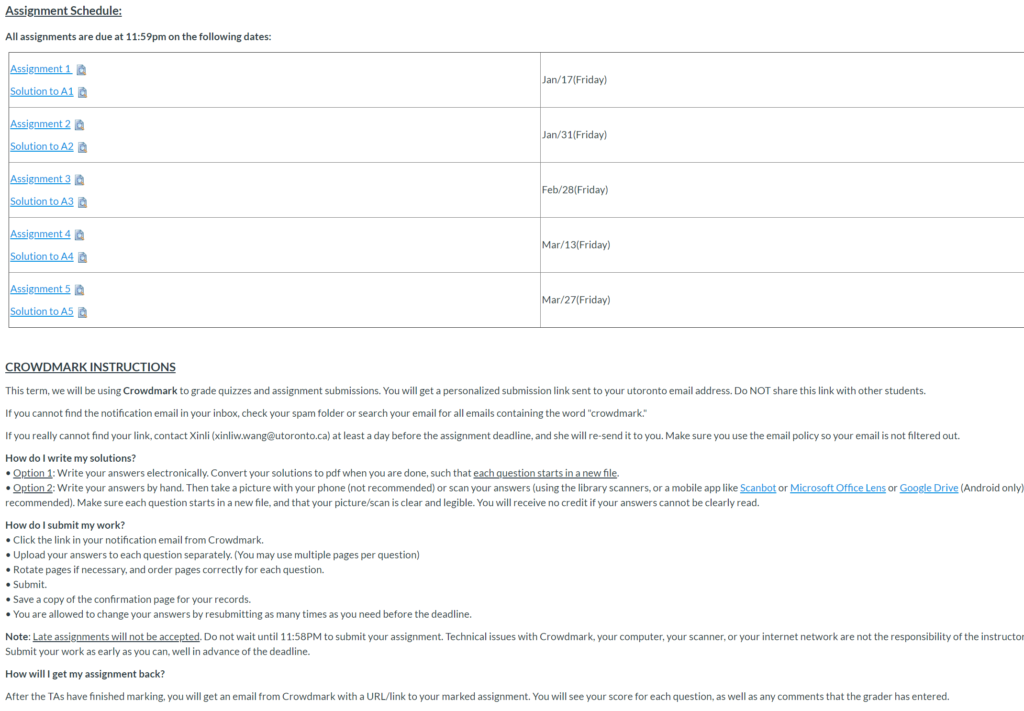For over eight years, I have been lecturing mathematics courses in higher educational institutions in Singapore and Canada and perfecting my skills of assessment and course design, engaging students, and education research. I’m a firm believer in adopting evidence-based teaching strategies to improve student’s learning experience and inclusive teaching. I’ve conducted a few Scholarships of Teaching and Learning (SoTL) projects such as using student’s feedback to improve teaching, improving student’s engagement using education technology and designing a calculus course using active learning pedagogy. I’m also passionate about Open Education Resources and Open Education Practices. In this portfolio I will share a few projects I did in the past to demonstrate my skills in instructional technology and remote pedagogy.
Case 1: Flipped Classroom Design
In 2014, my department at Singapore Polytechnic decided to revamp the common engineering mathematics courses. All in-coming students from the Engineering Department need to take these foundation math courses in order to move on with their studies. We used Flipped Classroom pedagogy for course design because of the proven benefit from various research. Typically, in a weekly lesson package that we developed, there were a few short videos with embedded quizzes that students can watch before contact time with the instructor. They are motivated to watch the videos and try the embedded questions, partially due to the weekly quiz they need to take in the beginning of the face-to-face lectures. During lecture time, we instructors play the role of facilitators to guide them through a series of activities. You can see a sample of a weekly lesson package here: there is a lesson plan, three videos, one in-class quiz and a set of in-class activities. This new model proved to be effective after we interviewed instructors and students. We also compared the student’s academic results with those that were from previous semesters and saw some improvement. Flipped classes allow students to consume lecture materials at their own pace and allow instructors to make better use of contact time to cover more challenging topics.
Case 2: Open Textbook in Linear Algebra
From September 2019 to April 2020, I worked on a funded project adapting an open textbook for Linear Algebra. You can find the book online: Linear Algebra with Applications Subtitle:An adaptation for MAT223 UTM
The importance of open educational resources (OERs) has been widely documented and demonstrated. OER provides new opportunities for access to educational resources, many also see in OER an opportunity for students and schools to save substantial amounts of money by eliminating the need to purchase expensive textbooks. There are many high-quality open textbooks in the field of mathematics and they have played an important role in lowering the cost that students pay for their education while maintaining the same educational benefits as traditional textbooks. The benefit of using open textbooks in higher education goes beyond cost saving. High quality OERs address social responsibility: providing education for all and sharing best practice internationally while raising the quality standards for educational resources by gathering more contributors . I believe sharing is the sole means by which education is affected. Sharing is also a foundation of OER—whether it be the mentored problem-solving approach of Khan Academy or the free-of-charge visualisation tools like Geo-Gebra. Students today have access to a great many high-quality textbooks in mathematics that can be easily found at websites such as OpenStax, BCcampus, and eCampusOntario. I personally believe this is the direction where future textbooks are going: free and open. I joined eCampusOntario to become one of the Open Education Fellows from 2019 to 2020. We learned about Open Education practices and CC licenses systematically and provided OE-focused professional development opportunities in partnership with post-secondary educators and learners. All the open education resources that I created are accessible and compliant with AODA (Accessibility for Ontarians with Disabilities Act).
Case 3: Interactive formative assessment
Formative assessments play an important role in facilitating student’s learning and fostering a growth mindset. Educators receive critical feedback about what their students have learnt throughout their learning process by using formative assessments. These assessments help students stay focused towards the learning objectives of the course, increase their engagement with the course materials continually, and take responsibilities of their own learning. I’ve designed many interactive formative assessments using H5P. H5P, also called HTML5 Package, is a plugin for existing publishing systems that enables the system to create interactive content like Interactive Videos, Presentations, Games, Quizzes and more. It is a completely free and open technology that aims to be community driven. H5P content can be embedded in any platform that supports embedded content (iframes) which makes it an ideal candidate for developing formative assessments. You can find more than 100 of H5P elements in the open textbook that I adopted and on eCampusOntario H5PStudio website. A few examples that I developed include Optimization in Calculus and Matrix Operations using Course Presentation content format; Optimization Examples and More Optimization Examples using Interactive Video format and Similar Matrix using Multiple Choice format.
Case 4: Course Design
A well-structured course is crucial to support student’s learning. The moment a student logs in the LMS, she/he should be clear about the structure of the course and should be able to navigate without difficulty. When I had the opportunity to coordinate MAT202 Discrete Mathematics, I redesigned the course website and restructured the assessment components of the course.
You can see a screenshot of the homepage:

There are 6 categories which students can browse through to get different information and they can access these pages by either clicking the icons or the texts.
Under Learning Strategies:

students can learn a few important strategies (in the form of texts and videos) to help them learn more efficiently.
Under Course Schedule:

they can see the course over the span of the whole semester and have access to all essential course materials here.
Under Assignment:

they can see the list of all assignments and their solutions, instructions of how to use Crowdmark and policy of re-grading on the same page.
I introduced in-class activities during tutorials so students can collaborate and work together. Fostering a learning community is important to enable students to share results and learn from each other. These in-class activities give them the chance to connect with each other and form a community that’s beneficial to everyone. I made sure students have some flexibility when it comes to graded assignments based on UDL principles: the best 3 out of 4 in-class activities and the best 4 out 5 assignment will count toward their final result. I also offer office hours in two ways: face-to-face and online using Zoom. Students who may not be able to travel to campus often choose to have discussions with me over Zoom. This turns out to be especially valuable once we shifted to emergency remote teaching: my students are used to seeing me on Zoom which made the whole transition smoother.
Case 5: Education Technology
Education technology tools have been around for decades and research has shown the effective use of them can enhance learners’ experience and deepen their conceptual understandings. I’m always interested in learning emerging technologies that could enhance my own teaching practice. In fact, I recently gave a talk at Canadian Mathematical Society 2019 Winter Meeting to share my experience of using education technology with the math community. You can find the conference program here: CMS 2019 Winter Meeting : Teaching Strategies for Increasing Diversity in Math and my presentation slides here: CMS 2019 Winter Meeting: TECH for teaching.
In this presentation, I shared four Education technological tools that I have used in my teaching. They serve different purposes: GeoGebra was introduced to my Linear Algebra class to improve student’s engagement. A list of activities that we did in class can be found here: GeoGebra in class activities; Padlet is used to collect student’s feedback and track their progress, which allows me to clarify their misunderstandings on a more timely manner; I also use Zoom online meetings to conduct my virtual office hours so students can save on commute in terms of time and money and still get their doubts clarified; an in-class polling tool called Mentimeter was also discussed: this is a great tool if you want to find out students’ conceptual understanding of a core concept in class. A few sample polling questions can be found here: MAT135 Calculus Clicker Questions.
Case 6: Active Learning Education Research
In order to help fresh university students develop deep conceptual understandings of mathematics topics in Calculus and keep them engaged, we redesigned a first-year Calculus course at a public teachers’ university in central China. We applied Knowledge, Community and Inquiry (KCI) model in which individual student serves as a knowledge source in our design. We focused on a few patterns for in-class activities: CSW (Community Supported Worksheets), CPC (Community Problem Creation) and PPP (Participatory Problems or Patterns). 308 students participated in this project during two semesters in which they learned differential calculus and integral calculus. The curriculum was designed for a unique setting that includes 7 interconnected “smart classrooms”, with a single professor and a TA for each room. The professor switches to a new room each day and our patterns are designed to engage the entire community of students (i.e., all 7 classrooms) in coherent activities that benefit from their collective participation.
I presented our work at The Research on Teaching and Learning Conference in December, 2019. You can find the slides here: Active Learning designs for calculus: A learning community approach for seven-interconnected classrooms.
We found that students’ epistemological beliefs are significantly impacted by an active learning approach. The learning community pedagogy deepens students’ commitment to mathematics learning, and student’s interactions with peers and TAs after classes become an important part of student’s learning which strengthens the whole learning community.
Case 7: Collecting Student Feedback
There is so much we can learn from our students. Student feedback of teaching is an important tool for course instructors to improve their teaching and students’ learning experience. In most colleges and universities, students are asked to provide their course feedback for the instructors at the end of the semester. However, waiting till the end of the semester is not enough because it’s only going to help instructors the next time when they teach the course. If instructors want to get student feedback and improve their teaching in a timely manner, they will have to start early. It could be formal, anonymous surveys early on, or talking to students after class, or regular lunches with students. They can provide very valuable information. I often do “Start, Stop and Continue” in my teaching in the middle of every semester: students are each given a piece of index card and asked to answer the following 3 questions anonymously:
1. What am I doing in our class that isn’t working? (Something I should STOP doing)
2. What should I put in place to improve your learning experience? (Something I should START doing)
3. What is working well? (Something I should continue doing)
The results are shared with the whole class in the next week and I usually am able to adjust my teaching based on the feedback received.
We presented our work at Society for Teaching and Learning in Higher Education 2018 conference The slides can be found here: Start, Stop, Continue and Ticket Out of the Door: Collecting and using student feedback to improve teaching in a large first-year math class.
Case 8: Emergency Remote Teaching
On Friday March 13th, our campus closed due to COVID-19. I had a Linear Algebra lecture that’s scheduled between 1pm and 3pm and I arrived at my classroom at 12:55pm. One of my TAs was waiting for me and a few students had arrived as well. The TA informed me that this lecture, as well as all future ones are cancelled; and I checked the Slack channel for instructors of that course immediately. There I found the class cancellation message sent to all of us from the coordinator around 12:30pm. I had little idea of what’s to come back then. I informed the students who were in the room to pack up and go home, and wait for further notice, and stayed a bit just in case any other students came to the room. Eventually I left a message on the blackboard to tell people that the lecture on that day won’t happen and started walking to my car. Then reality hit me: we are not only cancelling Friday afternoon’s lectures, we are cancelling ALL lectures, probably for the rest of the semester knowing what happened in China. For the course that I coordinated, I decided to provide all the remaining course materials in text format. I have been sharing my (unfilled) lecture slides with students on LMS since the beginning of the semester. Students received the full slides with annotations from me since school closure. I used synchronous sessions to meet students and answer their questions. We meet twice every week and these non-mandatory sessions are fairly informal. Attendance usually is between 10-30 students and we were able to work on problems together, and talk about concerns they have regarding what’s going to happen to the course. These conversations helped me understand my students better and allowed us to stay connected. The community we built before school closure survived. In fact I did a survey to ask them about their learning experience of our course before semester ended and the 96 responses are mostly very positive. The questions I asked include: How are you doing? How’s your family doing? What are the main challenges for you when teaching and learning switched to online mode? What could be done differently to improve your learning experience given the current circumstances? Students’ main concern is about how to stay motivated which I believe is an important issue we should address for all the online courses we provide. They are very appreciative for our effort in moving the course online and supporting their learning over such a short period of time. Some concrete plans I have for my future online courses to help students stay engaged include building a community from the very beginning of the semester by using Discussion Forum; having a clear course map that shows what’s happening each week and what work (reading, video lessons, assignment, polling questions, discussions online etc.) students are expected to do and when to have them done; making sure students know how to get support from us instructors and from the university; letting them know how long they can expect to get a response from us (for example: they should be informed that it’s unrealistic to expect instant replies but their emails/posts will be answered in 24-48 hours) and having accessible course materials available.